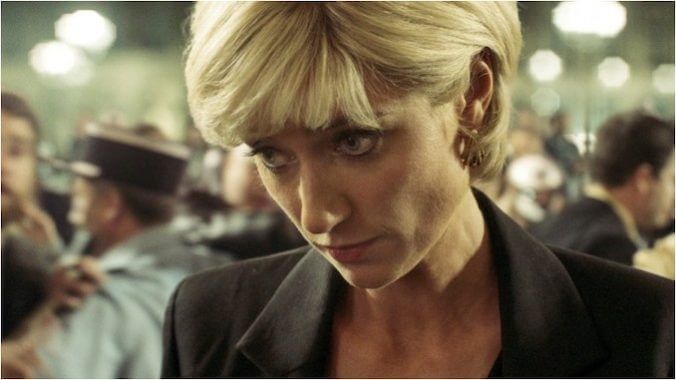The Crown’s Final Season Begins With Diana’s Death, But Struggles To Convey Its Impact
Photo Courtesy of Netflix
It’s the end of an era. (Sort of.) The final season of Netflix’s The Crown is upon us, meaning that one of the streaming era’s most ambitious and critically acclaimed series is entering its last chapter and is, predictably, doing so on its own terms. As most people are likely aware by now, the streamer has decided to split the final season of its prestige period piece into two parts, with the first four episodes premiering this weekend and the concluding installments arriving in December. This first batch of episodes deals almost exclusively with the last months of Princess Diana’s life, from the early days of her relationship with Dodi Al-Fayed to the tragic accident that took place in Paris in the summer of 1997 and the global outpouring of emotion that followed her death. And, let’s be clear, it all certainly does make for riveting television.
But while the first half of the season may make an excellent Diana miniseries, it’s not entirely clear that it works as a concluding installment of The Crown, a show that once had a much more sweeping scope and grander ambitions than what often comes across as simple stenography. (Or propaganda, depending on how you feel about the wildly friendly edit this season gives Charles, who is, after all, now King of England.)
Season 6 begins eight weeks before the accident that will change the monarchy forever, as Diana (Elizabeth Debicki) and Charles (Dominic West) do their best to co-parent young princes William (Rufus Kampa) and Harry (Fflyn Edwards), splitting weekends and shuttling the boys between locations. The Prince of Wales has begun a campaign to convince the queen—and the country they rule—to be more accepting of his relationship with Camilla Parker Bowles (Olivia Williams) as Queen Elizabeth (Imelda Staunton) herself continues to watch the news reports of her former daughter-in-law’s tumultuous post-royal life and wonders if “that girl” will ever be able to find peace. As for Diana, she’s throwing herself into her charity work, and spending a great deal of time with the Al-Fayed family, whose patriarch Mohammed (Salim Daw) has basically decided that his son Dodi (Khalid Abdalla) needs to woo the former Princess of Wales, despite the fact that he’s got a fiance of his own in America. Dodi, painfully desirous of his father’s approval, agrees with shockingly little pushback.
The season’s first four episodes (all of which were available for review) take place under an almost palpable cloud of tension and doom. We all know what’s coming, after all, and the series is counting on that fact. From their opening moments, which show us a man walking his dog in Paris as the sounds of a car crash reverberate through the night, to the careful recreation of headlines and iconic images from Diana’s summer with the Al-Fayed family, every moment feels like a countdown ticking one beat closer to tragedy. The show is particularly adept at depicting the wild heights of Diana-mania, as her name dominates every news cycle and throngs of people shout her name wherever she goes. A sequence in which she’s essentially forced to run for her life while out for gelato is particularly chilling, and each time a pack of photographers follows her from one location to another feels like a dark foreshadowing of the one chase she won’t escape from.
Debicki, once again, is outstanding as a Diana attempting to figure out who she is now that she’s no longer (as the show frequently takes pains to point out) an HRH. Her clear and abiding love for her sons and her genuine desire to use her platform for good are frequently contrasted with her selfishness and seemingly bottomless need for male affection that leads her into the Al-Fayeds’ world in the first place. If this particular part of The Crown’s story has a major flaw, it’s that Diana doesn’t get enough screen time in her own right, and her character lacks some of the interiority we saw in earlier seasons. Instead, the show devotes a perplexing amount of time—during what is ostensibly Diana’s story—to the inner workings of the Al-Fayed family, spending as much time on Mohamed and Dodi’s toxic relationship and Dodi’s refusal to break up with his girlfriend as it does on Diana herself.
-

-

-

-

-

-

-

-

-

-

-

-

-

-

-

-

-

-

-

-

-

-

-

-

-

-

-

-

-

-

-

-

-

-

-

-

-

-

-

-








































